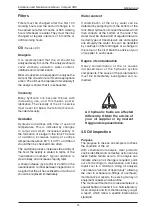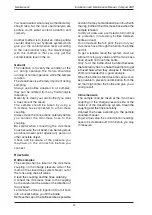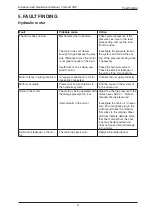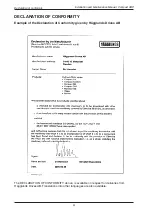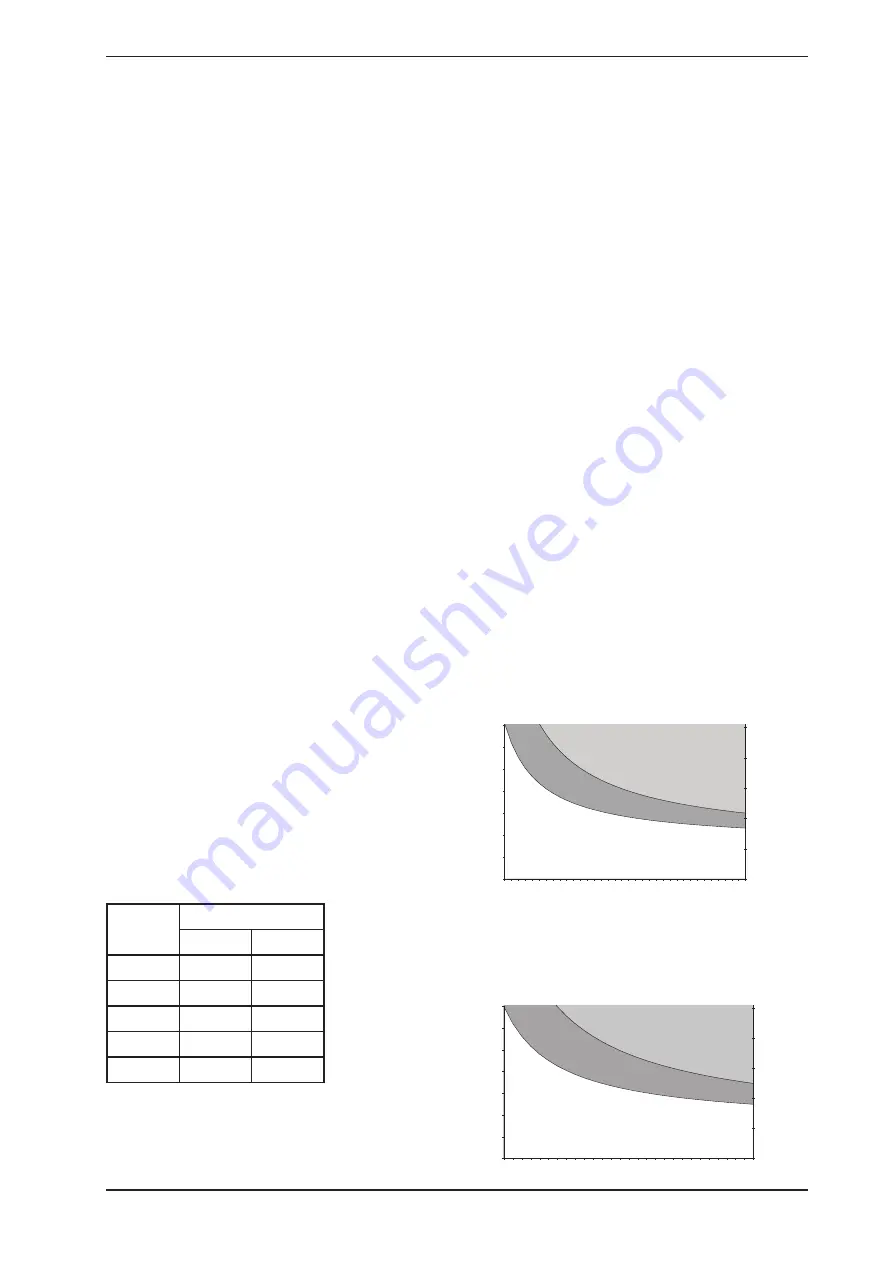
7
Installation and Maintenance Manual, Compact CBP
Maintenance
4.3
Commissioning
- During initial starting and the period im-
mediately after it, any hydraulic installa-
tion must be regularly and carefully checked at
frequent intervals.
- The working pressure and charge pressure must
be checked to ensure that they correspond to
the contracted values.
- The pressure in the drain line measured at the
motor must be less than bar (4,5 psi). This
pressure limit is important for the life of the
motor seals.
- If leakage occurs, correct the fault and carry out
new measurements.
- Check all lines, connections, screws, etc. and
correct if necessary.
- Check other possible leakage points and re-
place faulty parts.
- During the start up period, dirt particles in the
system are removed by the filters. The filter
cartridges have to be changed after the first
100 working hours and after that according to
the maintenance chart. see 4.4 note to check
the "filter clogged" indicators.
NOTE:
-
When starting up the motor it is important
that the motor output power is limited to max
power according to these technical data.
A not run-in motor in combination with dirt partic-
les in the oil can badly affect the sliding surfaces
in the motor. This is valid during the first 100
working hours.
4.2
Before commissioning
Place the motor as shown in fig 4.1, fill the motor
with filtered oil in the following order: D1, A1, B, C1.
See ., "Filtration".
Take extreme care to ensure that no contamination
enters the motor.
Seal connections A and C with the cover plate
fitted to the connection surface at delivery. Check
that the O-rings or rubber seals are in postion in
the cover plate.
Fit the plug to D1, D and D, the table below states
the amount of oil needed to fill the various types
of motors.
Check the following points before commissioning
the motor, i.e. before starting the first time:
- Check that the motor is connected to give
the correct direction of rotation (see . "Oil
connections" and ..1 "Direction of rotation of
motor shaft").
- Select the hydraulic fluid in accordance with the
recommendations (see . "Choice of hydraulic
fluid").
- Fill the motor housing with hydraulic fluid via a
filter into the drain outlets D1, D or the vent hole
(depending on how the motor is mounted).
- Check the drain line to ensure that excessive
pressure does not build up in the motor housing;
see .1 "Mounting instructions" and ...
"Draining and venting the motor".
- Check that the motor is protected from overloads
(see 1.1 "Motor data").- Check that the charge
pressure conforms to the charge pressure curve
(see .1 "Recommended charge pressure").
- Check that all hydraulic couplings and plugs are
properly tightened to prevent leakage.
- Make sure that the torque arm is sufficiently
fastened, see .1..
Table 4.1
Motor
Oil volume approx.
Litres
US gal.
CBP 140
5,0
1,
CBP 80
9,0
7,6
CBP 400
5,0
9,
CBP 560
5,0
9,
CBP 840
41,0
10,8
CBP 140
0
50
100
150
200
250
300
350
50
70
90
110 130 150 170 190 210 230 250 270 290 310 330 350 370 390
Speed [rpm]
H
ig
h
pr
es
su
re
[b
ar
]
0
1000
2000
3000
4000
5000
H
ig
h
pr
es
su
re
[p
si
]
0
50
100
150
200
250
300
350
30
40
50
60
70
80
90
100
110
120
130
140
150
160
170
Speed [rpm]
H
ig
h
pr
es
su
re
[b
ar
]
0
1000
2000
3000
4000
5000
H
ig
h
pr
es
su
re
[p
si
]
CBP 80-840
10 cSt
20 cSt
5 cSt
10 cSt
20 cSt
5 cSt

















